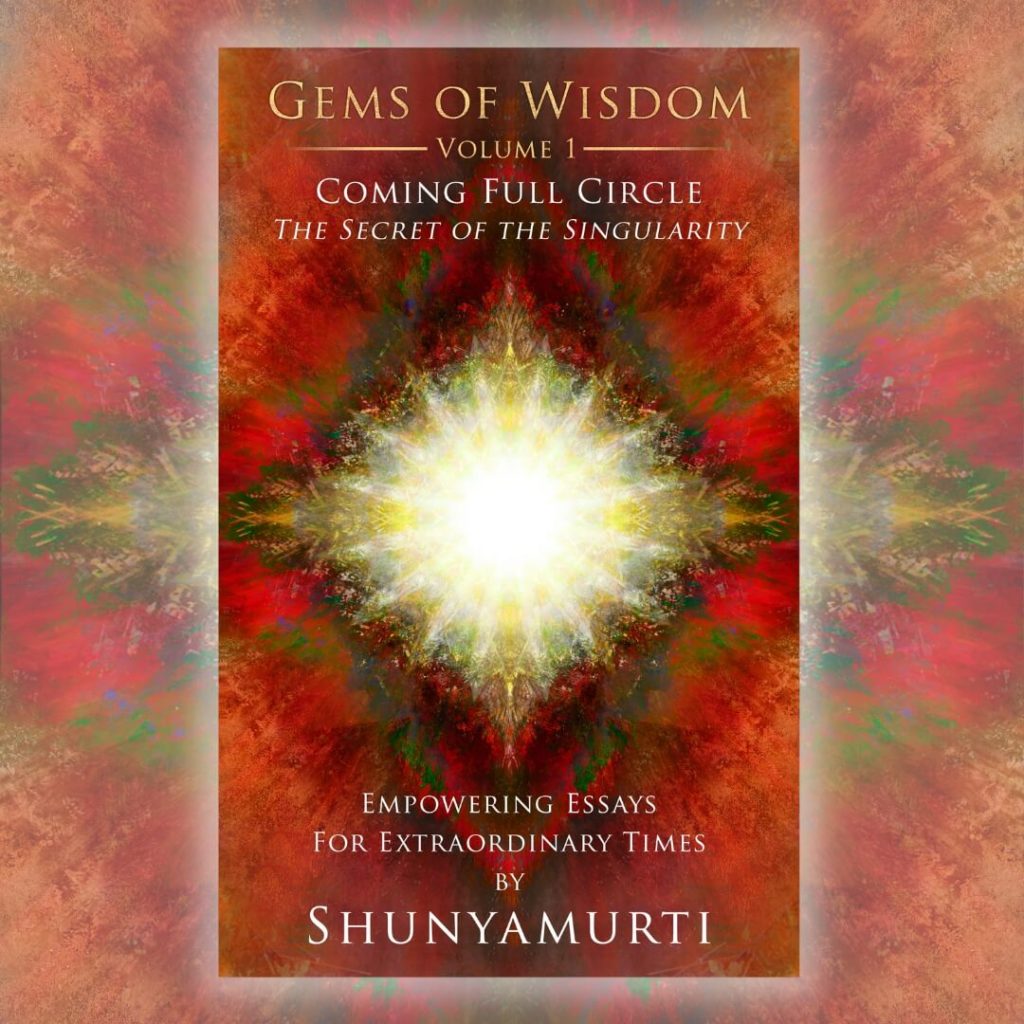The Aghori Option May Be Your Best Strategy
Summary: Today, many people are functioning as hungry ghosts. And many are paralyzed spiritually by feelings of disgust and shame about their self-images, histories, and modes of self-presentation. In this context, Shunyamurti retells a story originally told by Acharya Sthaneshwar Timalsina about his meeting with an Aghori guru—and explores the implications of the extreme lifestyles and practices of those pariah yogis with amazing powers. Through this analysis, we learn how to raise our consciousness to new symbolic heights and then pass beyond the mind to the Supreme Real. This enables the liberated Self to emerge.
Discover a treasure trove of teachings, essays, book groups and guided meditations. Sign up for your free 10-day trial of our Members Section LEARN MORE
How many of you have heard of the Aghoris? OK, it means “the terrible ones”. The Aghoris would break every rule, and they had no interest in any of the concepts of the Vedic tradition or the social order whatsoever, they tended to hang out in cremation grounds, they were naked other than the dust that they put on their bodies from the funeral pyres, and they remained in a state of absolute samadhi. But they did accept disciples, the ones who were realized, and this tradition and the Pashupata tradition as a whole—the Aghoris being one thread of that larger tradition, not all of them were Aghoris—but this tradition remains alive today, there are still Aghoris in India, and they are still acting, at least in the way that they traditionally did.
And there’s a famous story of a—I mean, most of them are considered to be very low class, uneducated, and complete trash by the main socially adapted people who don’t really appreciate their attainment—but those who are aware of the vibrational frequency that they have emanated throughout history to sustain the culture from a place of wanting nothing from it and of being completely indifferent to its values.
There was a recent Aghori who became one in midlife—he had a midlife crisis, apparently, and before that he was a professor of physics at a major Indian university, and very famous as a physicist, and then he gave it all up and threw off his clothes and went into one of these cremation grounds and became a disciple of one of the Aghoris who was the real thing, and then graduated to become probably the most well-known teacher of the modern period. And most people who would meet him in the cremation ground didn’t know his background, and assumed that he was uneducated. He was one time visited by a physicist who was looking down on him and said, “Why are you wasting your life in this way?” and all that. And he said, “Well, I’ll tell you what, if you can figure out a certain physics problem that it took me years to figure out, then I’ll consider going back”, and he gave him this problem, and the guy couldn’t figure it out. It was way beyond him. He was in shock and awe of the intelligence of this being. And he bowed to him, and I don’t know whether he became an Aghori himself, but he certainly became a devotee.
And so these beings who make such a radical decision are acting in a way that’s extremely rare, but they have recognized that if you want liberation, you have to pay a price. And part of the price—very interesting when you graduate from being a disciple to being named as an acharya, or a guru, a spiritual teacher in the Aghori tradition, you have to go through a final initiation in which you have to make yourself as disgusting as possible. You have to make yourself smell really bad so that no one wants to come near you, you have to arrange for your reputation to have been ruined so that everyone thinks you’re a charlatan and a fake, and you’re in it for the money, or to sexually abuse women devotees. You have to create that kind of a bad image of yourself and create such a reputation where no one’s going to bother you except those who can see through that facade. And so this Aghori did that, but the idea is this: that the final attachment that the consciousness has to the ego is based on a feeling of shame, disgust, and, of course, envy, and greed, and anger—but it’s shame and disgust that are the most difficult to remove, right? So they would smear feces on their bodies when they gave a satsang, and acted in ways that were so horrifying that it would create a shock to those who recognized the power of their presence, but were nonplussed by their appearance.
And the teachings of this school was that until you had been OK with being as hated and as seemingly toxic and completely unconscionably, unworthy of union with God, only in that state would you be able to completely let go of any attachment to the character, to the ego. You would have to be completely free of any care about how anyone else saw you or perceived your status, your spiritual stature.
And these yogis were so clear about this that they enacted it spontaneously in all of their behavior. So if you wanted to apply to become a devotee of one of these Aghori gurus, you would have to sit with him and drink a cup of tea that would be made in the cremation ground, and it would be the same teacup that he used day in and day out. They weren’t into washing their cups, they weren’t into washing or cleanliness of any kind, obviously, so they wouldn’t react to the Covid fear very much at all, I have no doubt. And their ability to simply not care because it wasn’t fake, it was real—they did not care about the fate of the body. And more than that, they would usually put some sugar in the tea, and the sugar would attract flies, and the flies would fall into the tea and die. And so this devotee who is telling the story said he looked at the tea with all of these dead flies in it, and he couldn’t drink it. He still had a bit of disgust and felt like, “Oh, no, this is too much, I can’t handle it! I know I’m going to be rejected as a disciple now! I’ll never be able to study and learn from this guru!” And some minutes went by, and the guru said to him, “You haven’t drunk your tea.” And he said, “You know there’s dead flies in it.” And the guru said, “Ah, oh, OK.” And he took the flies out and he ate them, and then he handed the cup to him, he said, “No more dead flies.” And the devotee still couldn’t quite swallow it, and he decided he wasn’t quite ready for that path. But he was so impacted by that event and that interaction that he had a transformative experience of letting go of most of his sanskaras. He didn’t quite get to that final level, but he did make a huge progress and continued studying, but not as an Aghori, but in another lineage of the Pashupatas.
But why am I bringing all of this up? We are not Pashupatas, and so I’m not presenting this as a teaching or a suggestion that anyone act in the same way, alright? And that form of yoga actually evolved into the Kashmir Shaivite Tantric, nondual Tantric tradition that came shortly after in which Abhinavagupta and Somananda and the other gurus of those wisdom schools decided that to move forward, they would have to shift the sense of disgust and of complete indifference to the bodily and the mental state and the social status into the symbolic realm, and not acted out in Real One. And so they turned this into a process of inner work in which there was a very deep self-analysis regarding one’s attachment to the ego.
Now, the relevance of all of this is that in the final lifetime at the end of Kali Yuga, many egos are toxic, disgusting, have no self-worth to themselves—I’m talking about a subjective self-image and attitude that’s identical with the one that the Pashupatas deliberately created and invoked and acted out. And if there could be a recognition that this is actually the highest blessing, to have an ego that you don’t actually want to hold on to, and that has no value, and all it is is an obstacle to liberation, because that false identity of the character has no validity in terms of the Real, the Supreme Real, in which there is only God, only God, and only the purity and goodness and beauty and absolute infinite glory of the Supreme Presence.
And so if one could recognize that gift of having an ego that is not really wanted, it doesn’t serve you, it creates only misery, it creates only suffering, it only can hold you back, and the only way out of the trap is freedom from those kinds of dualities. But as we evolve at the end of Kali Yuga, I would say that our approach must shift from Pashupata to Rajapata.
Now, I have to explain a little bit the meaning of Pashupata. Pata means Lord. And Pashu can be one of two, or both, defined in two different ways. One, is a beast, an animal, but it’s because the body is an animal body. It doesn’t mean beast in the biological sense, in the same way that the French, when they use the word bete, they don’t mean a beast, they mean somebody who is stupid, basically ignorant and unable to recognize the truth of their Real Self. So Pashu means secondly, one who is fettered—fettered, meaning you have bonds—because in the ancient world, the Pashupatas originally were mostly cow herders and nomads before they settled down, when they were still in the Saraswati River basin and hadn’t moved into the Ganga area. And there, at night, they would have to put hobbles on the cows and their horses to keep them from running away into strange territory. So the idea is that God is the Lord of those who are still in bondage, still in fetters, and the primary fetter is this attachment to the self-esteem of the ego, and suffering over a lack thereof.
Audio File: The Aghori Option May Be Your Best Strategy.mp3

